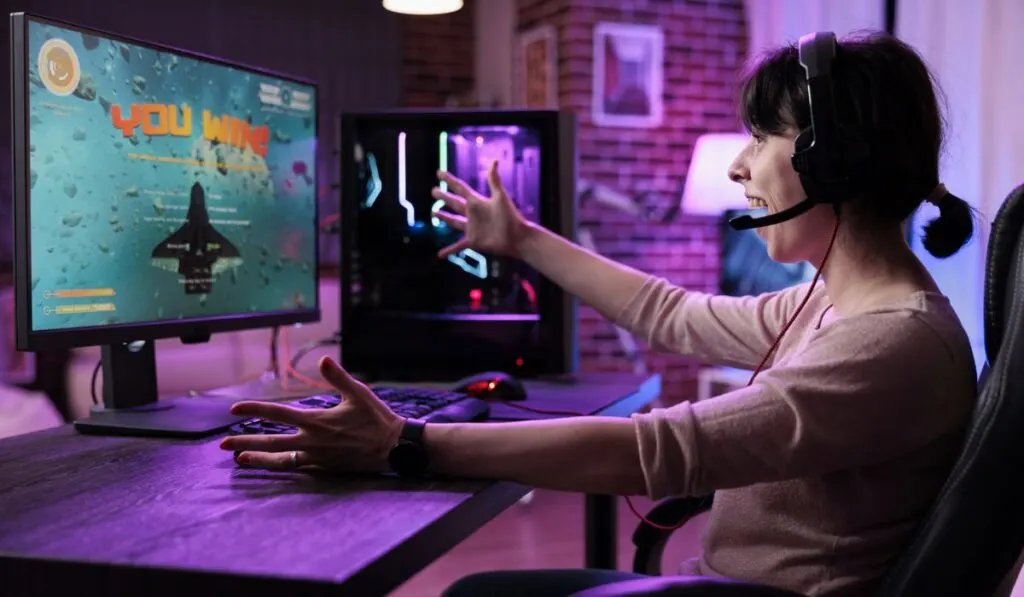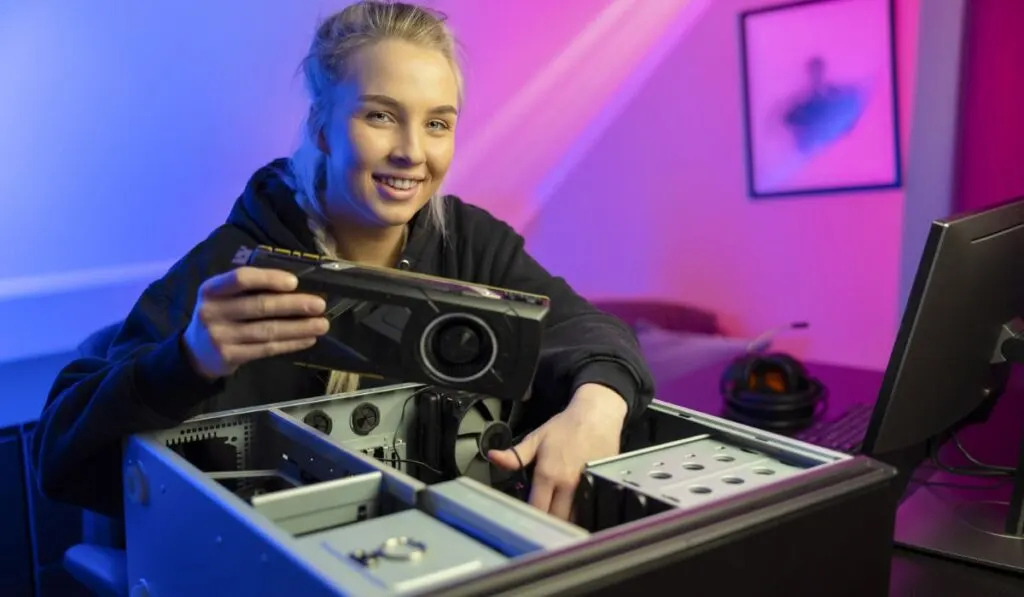For animation technology, ray tracing has become a benchmark unto itself. Where enthusiasts used to focus mainly on frame rates, ray tracing is now the goal. It’s a phenomenon that has even spilled into the world of console gaming, with Microsoft and Sony incorporating it in their latest consoles. But why is ray tracing such a big deal?
Ray tracing aims to solve one of the biggest hurdles in graphic fidelity: environmental lighting. It calculates how light should respond in an environment to light every animated object in the environment naturally. However, the technology does require compatible (and advanced) hardware.
Saying that ray tracing only impacts light sources is a little reductionist. There is a lot more going on behind the scenes. So let’s take a look at ray tracing and what it is.
What is Ray Tracing?

Ray tracing is a technology born in the film industry. When one needs to make it look like a dinosaur is in the same frame as a person, all light sources need to match up to make it look realistic.
Using ray tracing, you can place any amount of objects into the same scene. Then with ray tracing technology, the lighting will be consistent on all objects in the processed image.
Of course, a few other things need to happen for CGI and props to blend into a scene. The real challenge for special effects artists is that any given frame is also a picture of enormous amounts of physics at work.
You have the lighting to account for, as well as the shadows. But then there are things like surface tension, the effect of gravity, and the bane of every digital artist, real hair.
Ray tracing is a big step towards solving these problems in movies and now in games.
More Than Just Lighting
Imagine a technology that can render the details in blockbuster movies used in a game. That is what ray tracing strives toward. Ray tracing offers realistic lighting. However, it also brings realistic environmental effects that create a more believable gaming experience.
Ray tracing has to work with specular mapping. Specular mapping is a 3D modeling technique whereby you define the reflectiveness and glare of an object.
Combined with texture and bump mapping, ray tracing can react to a surface the way it would in real life. For example, if a CGI object is a marble slab, the light will reflect according to the opacity and bounce off as it should.
For glass, it will pass through and will faintly reflect. Things become interesting when you consider highly reflective spheres and asymmetrical shapes.
Imagine a reflection of an environment reflected on a mirror sphere that gets placed on a glass table. Now imagine the table is in a very cluttered room with many sources of light that interact with the glass table and the reflective sphere.
The trick to fooling the brain into seeing an image as “photorealistic” lies in mimicking the small environmental details the brain otherwise ignores.
In other words, reality should look how we expect it to, without us having to look at the detail.
In-Game Ray Tracing
The next question you ask may be about why your game is running at maximum ray tracing yet does not look anything like a modern blockbuster movie.
The answer is the same reason that it took ages for this tech to make it into the gaming industry: computational power.
Movies are rendered on enormous computer configurations. Unfortunately, no current consumer tech comes close to such computational power.
However, consumer GPUs have become more powerful with every iteration, and a GPU is a far better tool than a CPU for non-linear task processing like rendering ray tracing.
Unfortunately, the raw computational power of the top graphic cards is still embarrassing when we compare them to professional rendering rigs. Therefore, we can’t expect the full power of ray tracing just yet.
Ray tracing will become a fundamental technology in gaming like tesselation did in its day. As GPUs improve, so too will in-game ray tracing.
What are the Benefits of Ray Tracing?

Ray tracing is a technology that aims to benefit the overall quality of rendered images. The most apparent benefits are realistic reflections and shadows.
Lighting and Reflections
When in-game light sources emit any light, that light interacts with the game world realistically, including reflections and refractions of every object within range.
The complex lighting also adds cohesion to the gaming environment. For example, say you are playing a first-person shooter and drop a bomb on an enemy stronghold. The bomb detonates. Now, what comes next?
The bright orange light should interact with everything within the line of sight from the point of explosion. That means the explosion will light up walls, sandbags, trees, blades of grass, and anything else that it should illuminate in the environment.
But it doesn’t end there. What does that lighting do in the environment? Does it turn an area of a blue surface slightly green? Does broken glass reflect the flames at the proper angle?
The extent of what ray tracing can do with lighting and reflection is incredible. The only restriction is the power of our GPUs.
Shadows
Then there is the matter of shadows. Game engines have gotten good at rendering shadows. That said, the fact that the shadows rendered by ray tracing are dynamic makes them far more realistic and complex.
Shadows can cross each other as different objects move. The various light sources in a scene can interact and create new shadows. It creates a more realistic environment.
How to Enable Ray Tracing
To enable ray tracing:
- Ensure your graphics card’s drivers are up to date.
- Then, open the Nvidia control panel.
- Under Video Settings, enable Ray Tracing.
Still Not Working?
Remember, ray tracing is not a backward-compatible technology.
Older Game
If it is an older game you’re trying, there is no chance of getting ray tracing. That is, of course, until some clever modder releases a patch that enables raytracing. Beware, though, ray tracing gets baked into compatible games.
Any patch will probably result in a buggy mess with artifacts, glitches, display problems, and resolution issues.
New Game
If you want ray tracing in a new game, you can hope the developers will do a “Next-Gen” version. Some such versions breathe new life into older games, so if the game in question was a AAA blockbuster, the odds of a next-gen update are higher.
Other Issues
Before you move on with the troubleshooting process, consider that sometimes, for inexplicable reasons, a game won’t work correctly on a specific PC or console.
Try a different ray tracing-enabled game to ensure this is not the problem. If you don’t have access to another game with ray tracing, download one of the many graphical benchmarking tools.
If the benchmark allows you to use ray tracing and it completes successfully, something is causing a problem with the specific game you are playing.
The best thing you can do is look up forums to see if anyone else has the same problem. Then, with a bit of luck, you may find a solution.
The Game is Not the Problem
Your system may have a bottleneck. Unfortunately, it is one of the most common issues in PC gaming.
You can have all the latest hardware, but a single component may not meet the game’s requirements. Likewise, somewhere in your system, a component might limit your computer’s potential performance.
To eliminate potential bottlenecks, you must go through your PC’s components. Finding and replacing one component may significantly improve your PC’s performance. Remember, your system as a whole needs to support DirectX 12.
There are an exhausting number of potential issues.
Everything is Updated, and DirectX 12 is Running
If you have gone through these troubleshooting steps and ray tracing still does not work, you may have to do an elimination test.
If you have a second PC or a friend who will let you use theirs, it’s time to start eliminating potential problems. Start with your graphics card.
Switch it to the other computer, turn it on and check if you can enable ray tracing. If not, you have identified the problem as the graphics card.
If you can turn on ray tracing, you must systematically switch hardware until you identify the part interfering with ray tracing.
Your motherboard may be outdated and can’t support the latest PCI version. Likewise, your RAM may need to be updated to allow your PC to run full-throttle.
Maybe two pieces of hardware don’t play nice, and one needs replacing. Additionally, it could also mean your operating system needs to be updated.
Note: There is no reason to test your hard drives or ports.
GTX vs. RTX: Which is Better?
GTX cards were a vast improvement over the previous range of graphic cards. The main draw was that the GTX range was Nvidia’s first to reach the capability of rendering one “giga-texel.”
That is where it gets its name, Giga Texel Shader eXtreme. These cards ran on the Turing architecture and the GTX 1660 chips’ latest and greatest version.
The 2019 release of new GTX cards, alongside the new RTX cards, was a lot like the launch of the iPhone 8 and the iPhone X. Only one design would come back the following year.
The GTX 16 series was the last of the GTX range. All of Nvidia’s premium graphics cards since are “RTX” cards.
Also, like the iPhones, the GTX 1660 was, and still is, a great card. Unfortunately, many future features and new capabilities won’t come to the GTX series. That is primarily because of the insane rendering power of the RTX range. GTX will inevitably fall by the wayside.
A significant caveat might still persuade you to get a GTX card: performance versus price.
How Much Does a Ray Tracing Capable Graphics Card Cost?

It can set you back roughly the deposit on a second-hand sports car. The top-of-the-range RTX cards cost up to $1599. That is a lot of money to spend to get ray tracing.
Enthusiasts who can pay the price can’t go wrong, but for the rest, we recommend a card with lower specs that can still perform ray tracing.
The RTX 3050 costs around $359 and performs better than expected.
Alternatively, you could still purchase a GTX 1660. A new driver update allows the card to run basic ray tracing. But, of course, the performance takes a knock, and you may have to tune down your graphics settings to get most games to a playable framerate.
